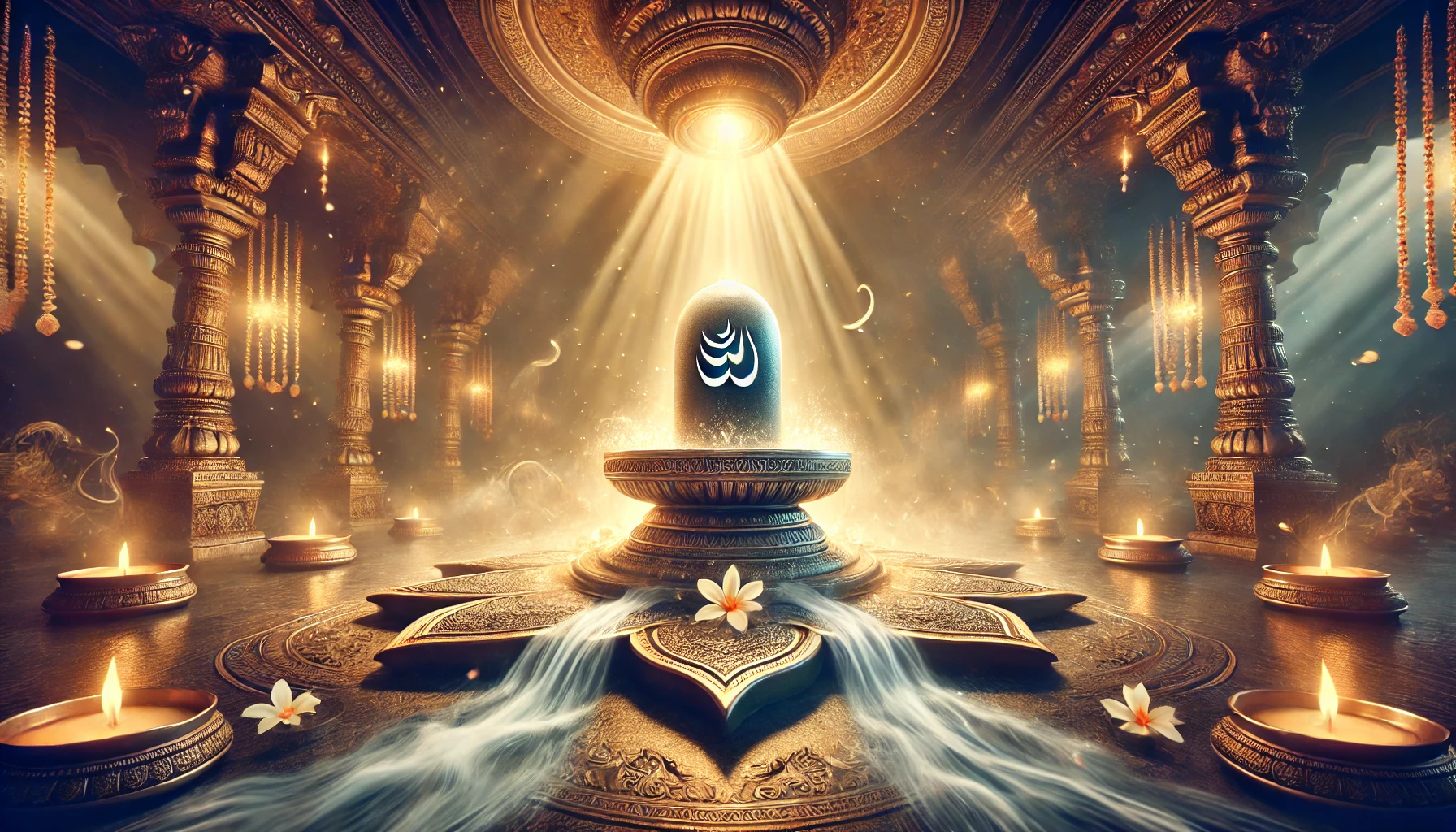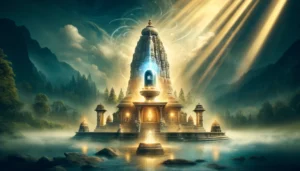
History of Jyotirlinga temples in India
The Secret of Jyotirlingas: Mystical Energies of Shiva Temples
In the sacred geography of India, Jyotirlingas hold an unparalleled position as spiritual powerhouses dedicated to Lord Shiva, the cosmic force of creation and destruction. These twelve revered shrines are not merely architectural wonders but also centers of mystical energies that transcend time and space. The Jyotirlingas are believed to radiate divine energy, creating an atmosphere conducive to spiritual growth and self-realization. To truly understand the secret of Jyotirlingas, one must explore their spiritual, mythological, historical, and scientific dimensions, each of which offers profound insights into their eternal significance.
What Are Jyotirlingas?
The term “Jyotirlinga” originates from the Sanskrit words jyoti (light) and linga (symbol of Shiva). According to ancient scriptures, a Jyotirlinga is a radiant column of divine light that represents Lord Shiva in his formless state. Unlike ordinary lingas, which are physical representations of Shiva, Jyotirlingas are believed to be cosmic energy centers, each manifesting a unique aspect of Shiva’s divine play (leela).
The Shiva Purana and other sacred texts describe the Jyotirlingas as powerful manifestations of Shiva’s omnipresence. While these sacred sites have existed for millennia, their energy and significance remain as potent today as when they were first revealed.
Table of Contents
The Twelve Jyotirlingas: Gateways to the Infinite
Each of the twelve Jyotirlingas has a distinct story and spiritual energy associated with it. Together, they form a powerful network of divine vibrations across the Indian subcontinent. Here is a closer look at each:
Somnath (Gujarat) – The first Jyotirlinga, Somnath represents the eternal and indestructible power of Shiva. Associated with the moon god Chandra, it symbolizes restoration and rejuvenation.
Mallikarjuna (Andhra Pradesh) – Located on the Srisailam mountain, Mallikarjuna embodies the unity of Shiva and Shakti, representing divine love and balance.
Mahakaleshwar (Madhya Pradesh) – The only south-facing Jyotirlinga, Mahakaleshwar signifies Shiva as the master of time (Kala), offering liberation from the cycle of birth and death.
Omkareshwar (Madhya Pradesh) – This Jyotirlinga, located on an island shaped like the sacred Om, symbolizes the primal sound that created the universe.
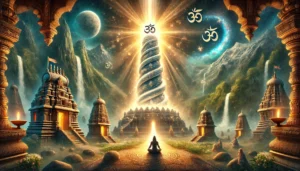
History of Jyotirlinga temples in India
Kedarnath (Uttarakhand) – Nestled in the Himalayas, Kedarnath is associated with the Pandavas and represents Shiva as the forgiver of sins, guiding devotees toward self-purification.
Bhimashankar (Maharashtra) – Linked to Shiva’s battle with the demon Tripurasura, Bhimashankar reflects divine protection and the triumph of good over evil.
Kashi Vishwanath (Varanasi) – Considered the spiritual epicenter of India, Kashi Vishwanath is said to grant liberation (moksha) to those who die in its vicinity.
Trimbakeshwar (Maharashtra) – The origin of the holy Godavari River, this Jyotirlinga signifies abundance and spiritual cleansing.
Vaidyanath (Jharkhand) – Known for its healing powers, Vaidyanath is believed to cure all physical and spiritual ailments.
Nageshwar (Gujarat) – This Jyotirlinga is associated with protection from negative energies and symbolizes inner strength and resilience.
Rameshwaram (Tamil Nadu) – Built by Lord Rama to seek Shiva’s blessings, Rameshwaram emphasizes devotion and humility.
Grishneshwar (Maharashtra) – The smallest Jyotirlinga, Grishneshwar epitomizes simplicity and devotion, reminding devotees of the importance of faith over formality.
The Mystical Energies of Jyotirlingas
Spiritual Energy Centers
Jyotirlingas are strategically located in regions of high spiritual energy, often aligned with natural energy grids of the Earth. These sites are believed to act as energy vortexes, amplifying the divine vibrations of Shiva. Pilgrims who visit these shrines frequently report feelings of inner peace, heightened awareness, and transformative spiritual experiences.
Each Jyotirlinga corresponds to specific aspects of human consciousness, aligning with the seven chakras of the body. For instance:
Mahakaleshwar resonates with the root chakra (Muladhara), grounding the devotee and helping overcome fear.
Kashi Vishwanath aligns with the crown chakra (Sahasrara), enabling enlightenment and liberation.
By meditating in these sacred spaces, devotees can harmonize their inner energies with the cosmic vibrations of Shiva, facilitating spiritual growth.
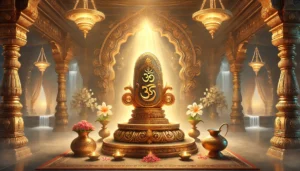
History of Jyotirlinga temples in India
Cosmic Connections and Sacred Geometry
The locations of Jyotirlingas are not random. Ancient Indian sages meticulously selected these sites based on their alignment with celestial bodies and magnetic fields. For example, the Kedarnath temple is strategically situated in the Himalayas, an area known for its heightened geomagnetic activity. Similarly, the Kashi Vishwanath temple in Varanasi is considered a tirtha, or spiritual crossing point, where the earthly and celestial realms converge.
The architectural design of Jyotirlinga temples further enhances their energy. The spires act as conduits for cosmic energy, channeling it into the sanctum sanctorum where the linga resides. The layout of these temples often follows sacred geometric principles, creating a harmonious environment that resonates with the universe’s natural rhythms.
Healing Powers
Jyotirlingas are also centers of healing. The water used in abhisheka rituals is believed to absorb the temple’s vibrational energy, making it a potent elixir for physical and mental well-being. The chanting of sacred mantras like “Om Namah Shivaya” during rituals generates specific sound frequencies that cleanse the mind and body, enhancing overall health.
Scientific Perspective on Jyotirlingas
The mystical energies of Jyotirlingas have also intrigued scientists and researchers. Some studies suggest that these temples are located on Earth’s energy-rich zones, where underground water streams and magnetic fields intersect. This creates an electromagnetic environment that can influence the human brain, inducing a meditative state and promoting mental clarity.
Moreover, the ritual practices performed at these temples, such as the rhythmic chanting of mantras and the use of specific materials like copper and stone, are believed to generate positive ions, enhancing the temple’s spiritual ambiance.
The Pilgrimage Experience: A Journey to Self-Realization
Visiting the twelve Jyotirlingas is not just a physical journey but an inward quest for self-discovery. Each temple represents a different facet of Lord Shiva, guiding devotees through various aspects of existence:
Somnath teaches the lesson of renewal and hope.
Mallikarjuna inspires harmony between masculine and feminine energies.
Kashi Vishwanath offers the ultimate truth of liberation.
The pilgrimage is often described as a transformative experience, helping devotees shed their ego, embrace humility, and connect with their higher selves.
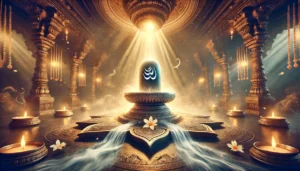
History of Jyotirlinga temples in India
Conclusion: The Eternal Light of Shiva
The Jyotirlingas are timeless beacons of Lord Shiva’s boundless light and power. Their enduring appeal lies in their ability to inspire devotion, transformation, and enlightenment. For those seeking spiritual elevation, these sacred sites offer a unique opportunity to connect with the infinite energy of Shiva and glimpse the ultimate reality that lies beyond the material world.
As the Shiva Purana proclaims, “By the sight, touch, and worship of Jyotirlingas, one is freed from all sins and attains the highest state of spiritual liberation.” In a world driven by material pursuits, the Jyotirlingas stand as reminders of the eternal truth—that the ultimate goal of life is to merge with the divine light of Shiva and attain union with the cosmos.
Here are some frequently asked questions (FAQs) on the topic “The Secret of Jyotirlingas: Mystical Energies of Shiva Temples”:
- What are Jyotirlingas?
Jyotirlingas are sacred shrines dedicated to Lord Shiva, where Shiva is worshipped in the form of a lingam of light (Jyoti means light). These sites are believed to emit immense spiritual energy and are mentioned in ancient Indian texts like the Shiva Purana.
- How many Jyotirlingas are there in India?
There are 12 Jyotirlingas located across India. Each holds a unique significance and is associated with a specific legend related to Lord Shiva.
- What is the spiritual significance of Jyotirlingas?
Jyotirlingas are believed to be centers of divine energy that can purify the soul, aid in spiritual awakening, and help devotees connect with the cosmic energy of Shiva. They symbolize the infinite power and presence of Lord Shiva.
- Why are Jyotirlingas considered mystical?
Jyotirlingas are considered mystical because they are said to resonate with specific cosmic energies that influence physical, mental, and spiritual well-being. Pilgrims often report experiencing peace, enlightenment, and transformation after visiting these temples.
- What are the 12 Jyotirlingas, and where are they located?
Here’s a list of the 12 Jyotirlingas and their locations:
Somnath – Gujarat
Mallikarjuna – Andhra Pradesh
Mahakaleshwar – Madhya Pradesh
Omkareshwar – Madhya Pradesh
Kedarnath – Uttarakhand
Bhimashankar – Maharashtra
Kashi Vishwanath – Uttar Pradesh
Trimbakeshwar – Maharashtra
Vaidyanath (Deoghar) – Jharkhand
Nageshwar – Gujarat
Rameshwaram – Tamil Nadu
Grishneshwar – Maharashtra
- What is the story behind the Jyotirlingas?
According to the Shiva Purana, the Jyotirlingas emerged when Lord Shiva manifested as pillars of light in response to prayers or to resolve conflicts. Each Jyotirlinga has its own legend, explaining how it became a sacred site.
- Is there a specific order to visit the Jyotirlingas?
While there is no specific order, many devotees follow personal or traditional itineraries. Some undertake a pilgrimage to all 12 Jyotirlingas in a single lifetime, a journey called the Jyotirlinga Yatra.
- What is the significance of the lingam in Jyotirlingas?
The lingam represents the formless and infinite nature of Shiva. In Jyotirlingas, the lingam is considered a representation of divine light and energy.
- What are the architectural marvels of Jyotirlinga temples?
The Jyotirlinga temples showcase ancient Indian architectural excellence, featuring intricate carvings, sculptures, and designs. Temples like Somnath and Rameshwaram are not only spiritual hubs but also engineering marvels.
- Do Jyotirlingas have any connection to Vastu Shastra or cosmic alignments?
Yes, many Jyotirlinga temples are believed to be constructed in alignment with cosmic principles and Vastu Shastra, enhancing their energy fields and spiritual impact.
- Are there any specific rituals for worshipping at a Jyotirlinga?
Devotees usually perform Abhishekam (ritual bathing) with water, milk, or holy substances, chant Om Namah Shivaya, and meditate in the temple to absorb its spiritual energy.
- Can non-Hindus visit Jyotirlinga temples?
While most Jyotirlinga temples are open to people of all faiths, it is essential to respect temple traditions and customs.
- Are Jyotirlingas scientifically significant?
Some researchers suggest that Jyotirlinga temples are located on energy-rich zones of the Earth’s magnetic field, contributing to their spiritual and psychological impact on devotees.
- What is the best time to visit Jyotirlingas?
The best time to visit varies by location, but major Hindu festivals like Mahashivratri, Shravan Maas, and other auspicious days dedicated to Lord Shiva are popular.
- What are some lesser-known facts about Jyotirlingas?
Many Jyotirlingas are connected to rivers or water bodies, symbolizing purification.
Each Jyotirlinga represents a different aspect of Lord Shiva, such as the healer, destroyer of evil, or cosmic creator.
The pilgrimage is believed to remove negative karma and bring blessings.
- Are there any legends about miracles at Jyotirlingas?
Yes, there are numerous stories of miracles, such as healing illnesses, resolving conflicts, and divine apparitions, associated with these temples.
- What preparations should one make before visiting Jyotirlingas?
Devotees are advised to:
Fast or maintain a vegetarian diet before the visit.
Wear traditional attire.
Meditate or chant Shiva mantras to attune to the energy of the temples.
- Are there modern facilities near Jyotirlingas for tourists?
Many Jyotirlinga sites have well-developed facilities, including accommodation, transportation, and guided tours. However, remote locations like Kedarnath may require extra planning.
Summary
The Secret of Jyotirlingas: Mystical Energies of Shiva Temples
The Jyotirlingas, the twelve sacred shrines dedicated to Lord Shiva, hold immense spiritual significance in Sanatan Dharma. These temples are revered as the places where Lord Shiva manifested as a pillar of divine light, symbolizing his infinite and formless nature. Each Jyotirlinga is tied to a unique legend from ancient scriptures, reflecting Shiva’s cosmic roles as the creator, preserver, and destroyer. These sacred sites are not merely places of worship but are believed to be powerful centers of mystical energy that resonate with both spiritual seekers and devotees.
The locations of the Jyotirlingas, such as Somnath in Gujarat, Kedarnath in Uttarakhand, Kashi Vishwanath in Varanasi, and others, are thought to align with Earth’s magnetic fields and sacred geometry. This alignment is believed to amplify the spiritual vibrations, creating an environment conducive to meditation, healing, and inner transformation. The energy of these temples is said to help devotees transcend material limitations, cleanse negative karma, and connect with the universal consciousness of Shiva.
The rituals performed at these temples, such as abhishekam (ritual bathing of the Shiva Lingam) and chanting of Vedic mantras, further enhance the divine atmosphere, drawing pilgrims from around the world. Each Jyotirlinga represents a different aspect of Shiva’s divine presence, symbolizing unity in diversity and the spiritual oneness underlying all creation.
In addition to their spiritual importance, the architectural brilliance of the Jyotirlingas reflects the ancient wisdom of Indian temple design. The temples harmonize natural elements, cosmic energy, and sacred art, making them enduring symbols of India’s spiritual heritage. Pilgrimage to these Jyotirlingas is not just a physical journey but a spiritual quest, offering a gateway to higher consciousness and self-realization.
These mystical Shiva temples remind us of the timeless connection between humanity, divinity, and the cosmos, making the Jyotirlingas eternal sources of light and spiritual energy.
Related Articles
- The Tridevi: Lakshmi, Saraswati, and Parvati – Their Roles and Powers
- “Divine Creatures of Ancient Indian Scriptures: Exploring the Role of Animals in the Vedas, Puranas, and Mahabharata”
- Nature and Spirituality: Exploring the Sacred Essence of the Himalayas, Ganga, and Other Natural Wonders”
- “Reviving the Gurukul System: Relevance and Lessons for Modern Education”
- “Exploring Greek and Indian Mythology: Similarities Between Greek and Indian Mythology “
- “Embracing Sattvic Living: Harmonizing Mind, Body, and Soul Through Food and Lifestyle”
- “Charity and Prosperity: Exploring the Concept of Daan and Its Financial Relevance in Modern Life”
- How to Build an Eco-Friendly Home Inspired by Vastu Shastra
- Comparison of Ancient and Modern Sports: How Traditional Sports Have Influenced Contemporary Games
- “Timeless Lessons from Ancient Tales: Linking Samudra Manthan and Ganga’s Descent to Modern Ecological Challenges”
- “Reviving Sanskrit: How AI is Preserving Ancient Languages for the Future”
- “Mathura: The Sacred Land of Lord Krishna’s Divine Leelas”
- Investing for Future Generations: Lessons from Indian Traditions on Legacy Building and Wealth Preservation
- “Ancient Indian Wisdom: Timeless Lessons for Tackling Today’s Climate Crisis”
- “Artificial Intelligence and Spirituality: Transforming Ancient Practices for the Modern World”
- “Gold and Real Estate in India: Timeless Assets Shaping Financial Strategies”
- “Divine Feminine Power in Hindu Mythology: The Legends of Durga, Saraswati, and Lakshmi”
- “Divine Beings of Sanatan Dharma: The Spiritual Significance of Sacred Animals in Hinduism”
- “Symbolism in Mythological Art: Unlocking Hidden Meanings in Ancient Temple Carvings”
- “Exploring Technological Advancements in Ancient India and Civilizations: Vimana, Metallurgy, & Water Management systems”
- Unveiling the Mysteries: Ancient Temples of Sanatan Dharma , Mysterious Temples of India
- “The Scientific Knowledge of Sanatan Dharma: Ancient Wisdom Meets Modern Science”
- Ancient Indian Sports and Games: Celebrating a Legacy of Skill, Strength & Strategy”
- “Exploring the Cosmic Link: The Connection Between Astronomy and Vedic Astrology”
- The Power of Sanskrit: Unlocking the Divine Language of the Gods
- “The End of Kaliyuga: A Sanatan Insight into the World’s Final Chapter”
- Explore more articles on Prachin Sanatan Yuga.
History of Jyotirlinga temples in India History of Jyotirlinga temples in India History of Jyotirlinga temples in India History of Jyotirlinga temples in India History of Jyotirlinga temples in India History of Jyotirlinga temples in India
shiva temples Shiva temples Shiva temples Shiva temples Shiva temples Shiva temples shiva temples Shiva temples Shiva temples Shiva temples Shiva temples Shiva temples
